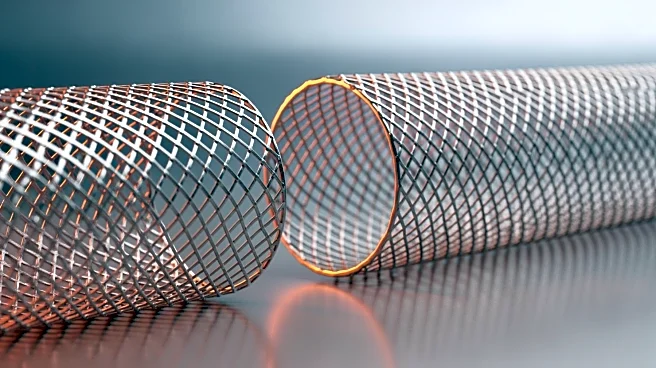What's Happening?
Researchers at Northwestern Polytechnical University have developed a new type of self-expanding stent that activates using body heat and moisture. The stent is made from a dual stimuli shape memory polymer, which expands at body temperature and in physiological
fluid. This innovation utilizes DLP-based 4D printing to create customizable vascular implants that recover their programmed shape with significant force while remaining soft enough to match vessel tissue. The stent's nanoscale architecture involves amphiphilic PF127 DA molecules that self-assemble into micelles, forming a strong yet pliable implant that expands naturally at body temperature.
Why It's Important?
This development in self-expanding stents represents a significant advancement in minimally invasive vascular care. The ability to activate stents using body heat and moisture simplifies the implantation process and reduces the need for external triggers, making procedures safer and more efficient. The customizable nature of these stents allows for personalized vascular therapeutics, potentially improving patient outcomes and expanding access to tailored medical care. The biocompatibility and low cytotoxicity of the material further enhance its suitability for long-term use in the human body.
What's Next?
Future research will focus on exploring biodegradable variants and assessing in vivo performance of these self-expanding stents. The concept of using body heat to activate implants could be extended to other medical applications, such as tissue scaffolds and drug-releasing devices. The potential for personalized vascular care through customizable stent designs may lead to broader adoption in clinical settings, improving patient outcomes and reducing healthcare costs.
Beyond the Headlines
The development of self-expanding stents highlights the intersection of advanced materials science and medical innovation. The use of 4D printing and nanoscale architecture in medical devices represents a shift towards more adaptive and responsive healthcare solutions. This approach not only addresses current challenges in vascular care but also opens new avenues for research and development in soft implants and other medical technologies.
















